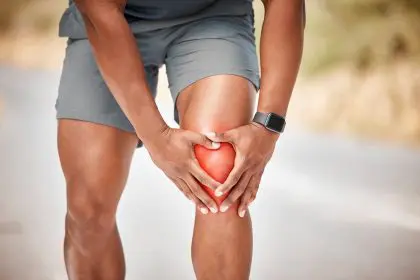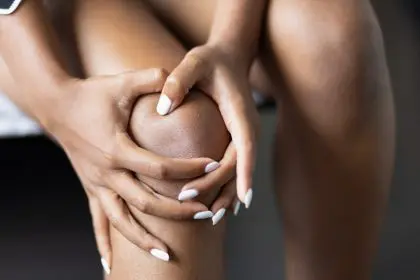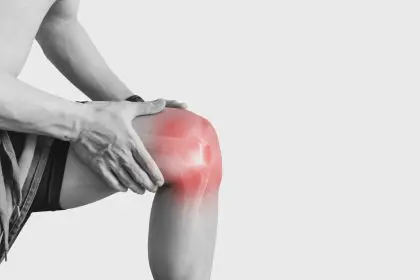Knuckle cracking is a widespread habit that remains controversial in discussions about joint health. While some consider it harmless and satisfying, others warn about potential long-term damage. Understanding the science behind this habitual behavior reveals important insights about its effects on our joints.
The mechanics of knuckle popping
Inside your finger joints lies synovial fluid, a natural lubricant that enables smooth movement between bones. When you crack your knuckles, you stretch the joint capsule, creating a sudden pressure drop. This action causes gases like nitrogen to form bubbles, and the characteristic pop sound occurs when these bubbles collapse. Though dramatic-sounding, this process happens within fractions of a second and typically doesn’t cause immediate pain.
The synovial fluid plays a crucial role in joint health, reducing friction during movement and providing essential nutrients to the surrounding tissues. Understanding this mechanism helps explain both the satisfying sensation many people experience and the potential risks of frequent joint manipulation.
Separating myths from facts
The most persistent myth about knuckle cracking links it to arthritis development. Despite widespread circulation of this belief, scientific evidence doesn’t support a direct connection between occasional knuckle popping and arthritis. However, research suggests other potential concerns deserve attention.
Dr. Donald Unger’s notable study, which involved cracking the knuckles of one hand for over 60 years while leaving the other untouched, showed no difference in arthritis development between hands. Yet, other studies have revealed subtle effects worth considering, particularly regarding joint stability and hand strength over time.
Understanding potential risks
Regular knuckle popping may lead to several concerns over time. Constant stretching of joint capsules can weaken ligaments, potentially reducing joint stability and increasing vulnerability to minor injuries. Some research indicates habitual knuckle crackers might experience decreased grip strength, affecting daily activities and hand functionality.
Physical effects may include mild swelling or discomfort in fingers. While these symptoms don’t necessarily indicate serious damage, they suggest joints experience stress from repeated popping. The psychological aspect proves equally important, as knuckle cracking often becomes an involuntary response to stress or anxiety.
Joint instability represents a particular concern, as weakened ligaments might lead to increased susceptibility to minor traumas and everyday strains. This vulnerability could affect long-term hand health and function, especially for people who rely heavily on manual dexterity in their work or hobbies.
Warning signs to watch
While occasional knuckle popping rarely causes significant harm, certain symptoms warrant medical attention. Persistent finger or joint pain, particularly when it lingers after cracking, should not be ignored. Swelling or redness around joints might indicate inflammation requiring evaluation. Stiffness or difficulty moving fingers, especially when accompanied by grinding sensations unrelated to typical popping sounds, deserves professional assessment.
These warning signs might signal underlying joint issues requiring medical intervention. Early recognition and response to these symptoms can prevent more serious complications and support better joint health outcomes.
Breaking the habit
For those seeking to stop knuckle cracking, several strategies prove effective. Keeping hands occupied with stress balls or fidget tools can redirect the urge to pop. Regular hand stretches provide tension relief without joint manipulation. Understanding personal triggers, whether stress or boredom, helps address root causes.
Stress management plays a vital role in breaking the habit. Since anxiety often triggers knuckle cracking, adopting relaxation techniques like deep breathing or meditation can help reduce the urge. Practice mindfulness to become more aware of when and why you crack your knuckles, enabling better control over the behavior.
Scientific perspectives
Research continues to examine long-term effects of knuckle cracking. While major studies disprove arthritis connections, findings suggest subtle impacts on joint health. One study comparing habitual crackers to non-crackers revealed mild differences in joint swelling and grip strength, indicating cumulative effects from repetitive behavior.
These studies emphasize the importance of moderation. While occasional knuckle cracking likely poses minimal risk, frequent repetition might contribute to subtle changes in joint function and stability over time. The cumulative effects of these small stresses warrant consideration, particularly for younger individuals who might maintain the habit for decades.
Psychological components
The psychological aspect of knuckle cracking extends beyond simple habit. Many people report a sense of relief or satisfaction from the action, creating a reinforcing feedback loop that makes the behavior difficult to stop. This psychological dependency might lead to increased frequency of cracking, potentially amplifying physical effects over time.
Understanding this mental component proves crucial for those wanting to change the habit. Addressing underlying stress or anxiety through appropriate channels, such as counseling or stress management techniques, might prove more effective than focusing solely on stopping the physical action.
Making informed choices
While evidence doesn’t support severe consequences from knuckle cracking, potential risks to joint stability and hand strength merit consideration. Like many habits, moderation proves key. The temporary satisfaction from cracking knuckles should be weighed against possible long-term impacts on joint health and hand function.
Our hands perform countless essential tasks daily, making their care particularly important. Simple awareness and mindful choices about joint stress can contribute to maintaining optimal hand health over time. Whether choosing to continue or quit, understanding both physical and psychological aspects enables more informed decisions about this common habit.
This story was created using AI technology.













